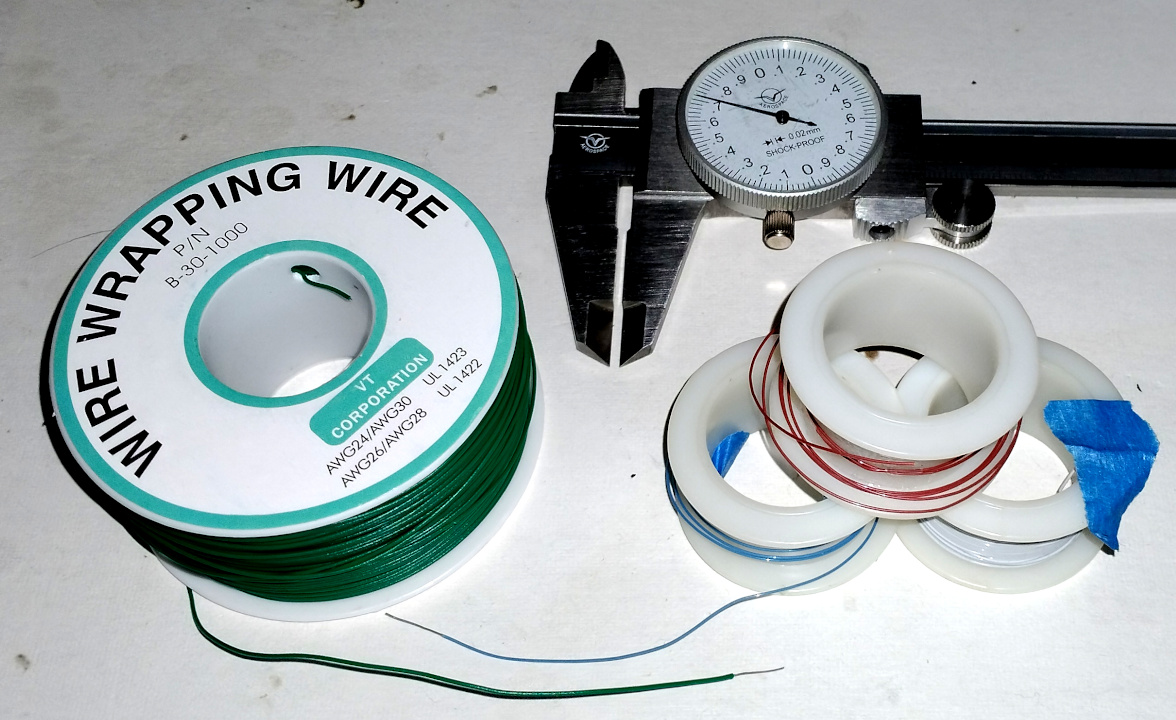3D Printing Coil Forms
I didn't have plumbing handy for sarob's coils, and while it's not a big deal to run down to the Home Despot and grab some, I thought this might be a good opportunity to instead do a bit of experimentation. So I whipped up a simple 38mm diameter cylinder in OpenSCAD, sliced it with 4 outer walls, no end walls, and no fill in Prusa slicer, and printed one 99mm tall and another 109mm tall.
Winding the 99mm with 30AWG was a little tricky, I had to keep pushing the windings together to make them tight. I realized what was fighting me here was the printing grooves associated with the printing layer height of 0.25mm vs the 30AWG single coat diameter of 0.28mm. Anyway, that coil measured a tad over the target 1mH, which was fine.
Winding the 109mm with 32AWG went considerably smoother, but at the end it measured 1.62mH instead of the expected 2mH - what's going on? The OD of 32AWG single coat is 0.22mm, but that measured fine. Taking a jeweler's loupe to the coil revealed tiny spaces between the turns - the wire was riding the printed layer grooves like a phonograph needle!
So I printed two more forms, the 99mm with 0.28mm layers, the 109mm with 0.22mm layers, and this time both coils wound pretty easy and measured correctly. I spray satin varnished them, and when that was dry I applied the heat shrink tubing. I was a little worried that the PETG, being a thermoplastic and all, might deform during the heating of the heatshrink, but it went fine. I think the nail polish and varnish doping stick better to PETG than to ABS / PVC.

Above, left to right: (good) 1mH w/ 0.28mm layers, 2mH w/0.22mm layers; (ok) 1mH w/ 0.25mm layers; (bad) 1.62mH w/ 0.25mm layers (which I didn't bother to heatshrink).
The forms take on the order of 2 hours to print. If I had a faster printer I'd probably go for a double wall with cubic fill, just to make things more rigid. PLA would be more rigid than PETG and can be printed faster, so maybe I'll give that a go next time. Printing is pretty inexpensive, each form is like 75 cents of plastic; plumbing costs somewhat more though it's not prohibitive, and it certainly is convenient to buy something more or less ready-made. The printed layer grooves are a nice guide to get things going with the wind, but they fight you somewhat during the wind, so it's a bit of a mixed bag. I've found that printing just about everything for the kit has been the best way to go: highly custom parts with no reliance on anything except the raw material.











